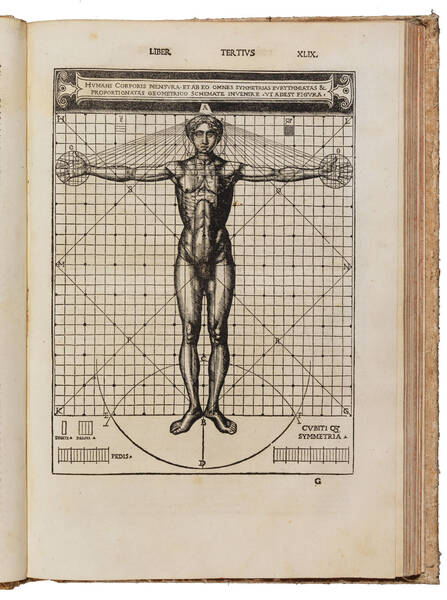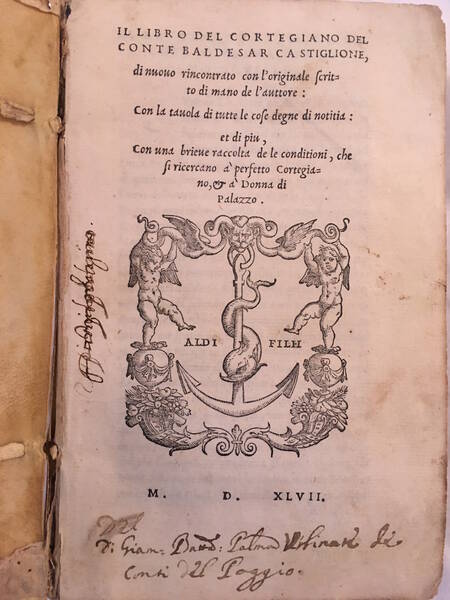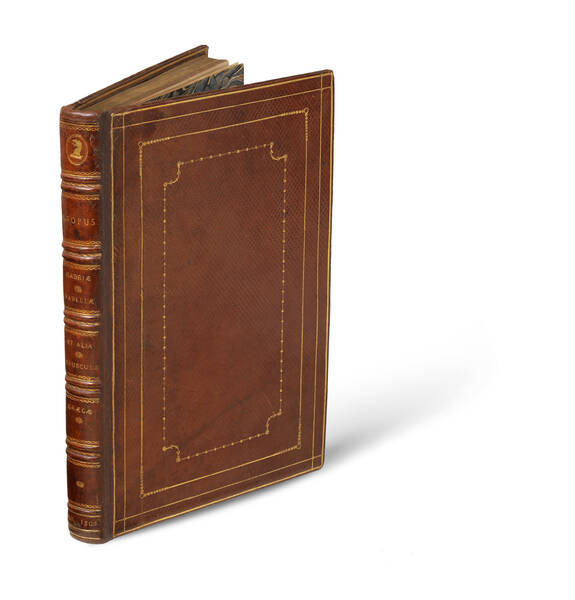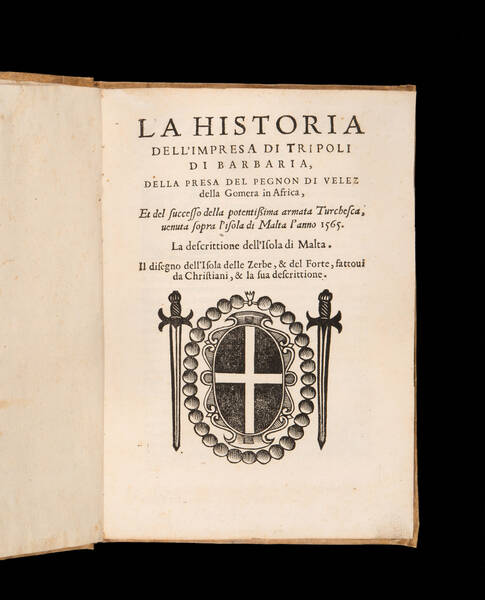CELLINI, Benvenuto. Due trattati vno intorno alle otto principali arti dell'oreficeria. L'altro in materia dell'arte della scultura; doue si veggono infiniti segreti nel lauorar le figure di marmo, & nel gettarle di bronzo. Composti da m. Benuenuto Cellini scultore fiorentino.
Florence, Valente Panizza & Marco Peri., 1568.Quarto (192 x 134 mm.), [6], 71, [7] leaves with the blank A6. Woodcut armorial of Ferdinando de' Medici on title-page, woodcut initials and tailpieces, woodcut printer's device at end. Light foxing but a very fine copy in late XVII century limp vellum, manuscript title on spine. Provenance: old shelfmark, QQ.IIII.20; Albani family, of Urbino (probably Alessandro Albani, 1692-1779), eighteenth-century Bibliotheca Albana armorial stamp at foot of title-page with letters BA; Pierre Deschamps (1821-1906), small engraved label of a donkey (his library sold in Paris in 1864); Giuseppe Martini of Lucca (1870-1944), bookplate and note "Duplicate" (lot 62 in his sale, Hoepli, Luzern, 20-26 August 1934, was another copy of this edition); Robert B. Honeyman (1897-1987), sale, Sotheby's, 30 April 1979, lot 659, £1,300, to Maggs; Robin Halwas, London, catalogue 4 (1999), item 36.; Bibliotheca Brookeriana (Sotheby's, 9 July 2024).
First edition of the two treatises by Benvenuto Cellini (1500-1571) on metalwork and sculpture, “recording his technical experience of embossing, engraving, enameling, and gilding metals, alloying gold (with ground carbonate), tinting diamonds, minting coins, designing medals, modelling, casting, and chiseling bronze statues, among other subjects. The treatises contain also his observations on Michelangelo's techniques and on those of other contemporary artists”. (R.Halwas, Cat. 4, 1999) At the end of the treaty on sculpture there are: Poesie toscane, et latine sopra il Perseo statua di bronzo, e il Crocifisso statua di Marmo fatte da Messer Benvenuto Cellini, some poems in praise of his Perseus and his crucifix, including two sonnets by Agnolo Bronzino, verses by Benedetto Varchi, Paolo Mini, Lelio Bonsi and Domenico Poggiani. “Although traditionally neglected by scholars, the Trattati are a book anything but insignificant in the contest of Cellini's literary production. First and foremost, they are the only major writing of the author which was published when he was still alive and therefore his only contemporary recognition as a writer. In the second place, the Trattati played a central role in the most problematic part of Cellini's life, as they were conceived by the artist as an instrument through which he was trying to regain the favour of Francesco de' Medici in order to escape the morass of marginalization and irrelevance in which […], he had spent his later years. Indeed, also because of his terrible relationship with some of the most powerful personalities at the Medici court, like Vincenzo Borghini and Giorgio Vasari, at the end of the crucial year 1565 Cellini lost the opportunity to play an active role in the Florentine artistic community, which was at the time almost entirely involved in the preparations for the sumptuous apparati for the marriage of the Prince Francesco with Joanna of Austria, daughter of the Emperor Ferdinand I. As the author recognized in the dedication letter of the Trattati, the book was therefore conceived and offered to Francesco de' Medici as a form of compensation, a gift which aimed to replace his unfulfilled works of art on the occasion of the nuptial festivities. Through the dedication of the Trattati, a text fundamentally technical and didactic, Cellini was hoping to capitalize on the Prince's well-known fascination for techne. The Trattati which mainly concerned the material procedures of the art making both goldsmithery and sculpture appeared a suitable gift for a lord who […] found his only pleasures in the artisanal activities connected with mineralogy, gemology, numismatics, goldsmithing and sculpture. […] Conceived by the time the Florentine artistic community was preparing the apparati for Francesco's wedding, the Trattati were completed by 1567, when the author donated the manuscript version of the book to the lord of Florence. […] The volume published by the Florentine editors Valente Panizzi e Marco Peri in the first months of 1569 had very little in common with the one prepared by its author between 1565 and 1567 and then donated to the Prince: the edition was on the contrary […] the supreme betrayal of Cellini's original text. […] As a matter of fact, a systematic comparison between the earlier manuscript version of the text, which is now preserved in the Biblioteca Marciana of Venice and the one that came out of the Panizzi and Peri press, reveals that the Trattati underwent a drastic transformation entailing reposition of chapters, massive cuts, interpolations and rewritings. […] Yet, this was not the only level of the editor's intervention, […] the emendations also entailed extensive cuts to many crucial passages of the Trattati which were considered – from many points of view – inappropriate, deviant or potentially subversive. As a result, a text that – beyond the technical data – was originally rich in comical, auto-apologetic or polemical tones was neutralized and converted into an innocuous handbook, or rather into an useful tool in the context of the Medicean propaganda. [...] These alterations - I believe – could to some extent highlight the role of local bureaucracies and academic institutions in the neutralization of “threatening” messages convoyed by a book […]: Cellini's Trattati constitute a very significant example of those cultural agencies' policy of control. […] in the case of Cellini's Trattati we do find countless examples of editorial expurgations of the text published in 1569. In the [… ] Counter – Reformist context what is peculiar to these alterations of the original text is the fact that they only in part had to do with religious or moralistic motivations […] they also had very “political” reasons. […] While the manuscript version of the Trattati was dedicated to the Prince Francesco de' Medici, the 1569 edition was addressed to his brother the young Cardinal Ferdinando (1549 - 1609). Yet, the change didn't affect just the identity of the addressee. Far from the meager, the commendation of Francesco that we read in the dedication letter of the manuscript Marciano, the 1569 edition expresses, in a magniloquent and pretentious style, the sublime qualities of the dedicatee, portrayed as an incomparable model of moral and intellectual virtues, as well as a munificent patron and as a connoisseur of the arts treated by the book. At the same time, the dedication mentions Ferdinando's “most virtuos” secretary, the young Gherardo Spini. Spini is cited as the person who, during prior conversations, had given the author direct testimony of the Cardinal's merits. Furthermore the letter highlights that Ferdinando's secretary was ornato di belle lettere, talented in literature and expert in the arts of drawing and architecture. He is also said to be held in the highest esteem by the author of the Trattati and he is especially recognized as the person who exhorted Cellini, after he had offered the manuscript version of the Trattati to Francesco de' Medici, to publish the book and to dedicate it to Ferdinando, as an “humble” way to repay all the “infinite benefits” received from the Medici family. No other people are mentioned in the dedicatory letter or in the text as having played any role in the genesis of the printed edition of 1569: thus solid textual evidence indicates Gherardo Spini as the person behind the revision of Cellini's Trattati. […] Beside being a loyal servant of Ferdinando, Spini was a member of the main literary and artistic institutions in Florence, both tools of the Medicean cultural policy, the Accademia Fiorentina (founded in 1541) and the Accademia delle Arti del Disegno (founded in 1563). He was a poet (both in Latin and in the Vernacular); he exchanged verses with many protagonists of the Florentine literary milieu (e.g. Laura Battiferri degli Ammannati, Benedetto Varchi and Agnolo Bronzino); he was, as well, the editor of an important edition of Giovanni Della Casa's works (1564). In 1567, his translation from Latin into Italian of Pietro Angeli da Barga's epithalamium for the wedding of Francesco de' Medici and Joanna of Austria was published by the Florentine press of Valente Panizzi and associates. He wrote, around 1569, an unfinished treatise on the ornamental elements in architecture, I primi tre libri sopra le instituzioni intorno agl'ornamenti, […] Moreover Gherardo Spini was designated in the prefatory letter to Domenichi's 1565 edition of the Facetie as the author of a courtly dialogue on behavior. According to Domenichi, this book by Spini, now lost, contained some dottissimi & vaghi ragionamenti, dove ei tratta del vero gentil'huomo affabile, piacevole, & gratioso, & qual ei debba essere a meritare questo titolo. Although sketchy and arid, this data collection allows us to highlight how Gherardo Spini was a particularly versatile intellectual, talented in literature and with a significant expertise in artistic theory. He was imbued with the ideals forwarded by the Italian courtly literature of the second half of the sixteenth century, a paraenetic, didascalic production which promoted the model of a courtier not only respectful of the behavioral rules shared in the contemporary “society of good manners”, but also meticulously deferential towards the authority. At the same time Spini appears in many respects perfectly integrated into the cultural policy of the Medici dukedom: he truly possessed […] all the intellectual features necessary to eradicate the most problematic contents of Cellini's Trattati.” (Diletta Gamberini, The censorship of Benvenuto Cellini's Trattati dell'orificeria e delle scultura. 2013-2014)
Edit 16, CNCE 10737. BM-STC 164. Adams C 1240. IA 135.063. Cicognara 273. Gamba 335.
Other Books
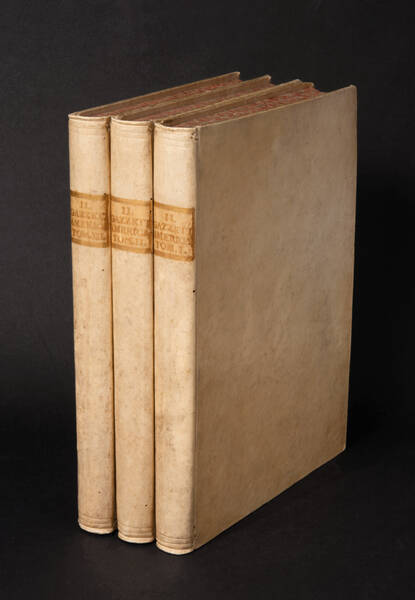
GAZZETTIERE AMERICANO
Il Gazzettiere Americano, contenente un distinto Ragguaglio di Tutte le Parti del Nuovo Mondo.
SOLD OUT
CONTILE, Luca
Ragionamento di Luca Contile sopra la proprietà delle imprese con le particolari de gli Academici Affidati et con le interpretationi et croniche.
€ 8.000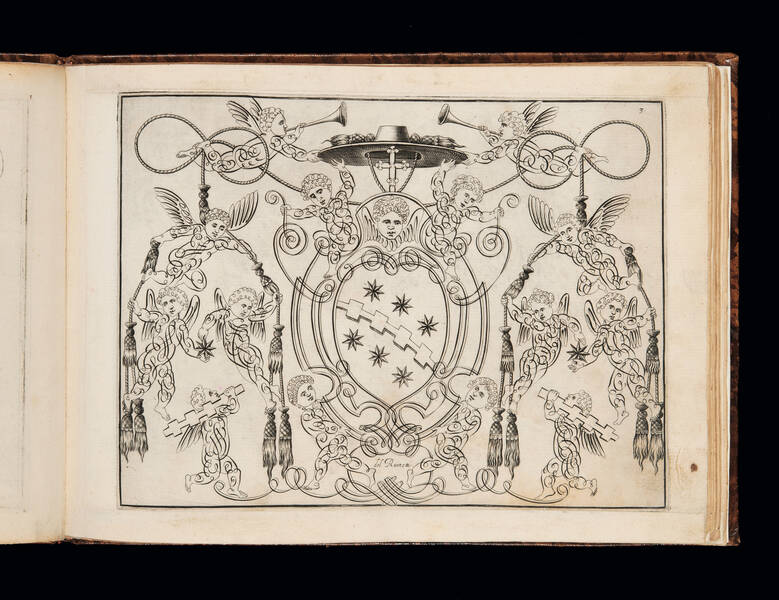
RUINETTI, Tomaso
Idea del buon scrittore, opera prima di Tomaso Ruinetti da Ravena a’beneficio de’desiderosi d’imitare le vere forme dello scrivere.
€ 8.000
GALILEI, Galileo
Opere, divise in quattro tomi, in questa nuova edizione accresciute de molti cose inedite.
SOLD OUT
[BIBLIA ARABICA]
Evangelium Iesu Christi quemadmodum scripsit Mar Mattheus unus ex duodecim discipulis eius.
€ 11.000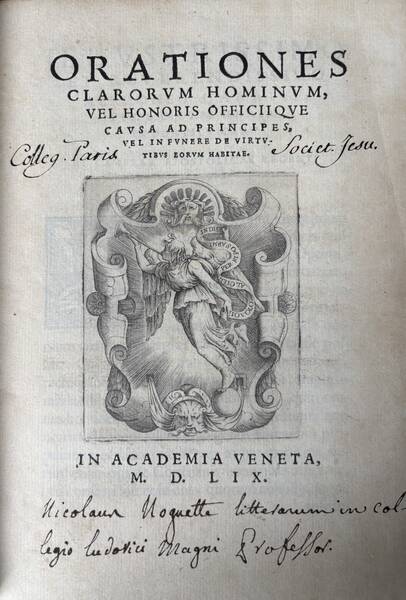
ACCADEMIA VENETA
Orationes clarorum hominum, vel honoris officiique causa ad principes, vel in funere de virtutibus eorum habitae.
€ 1.500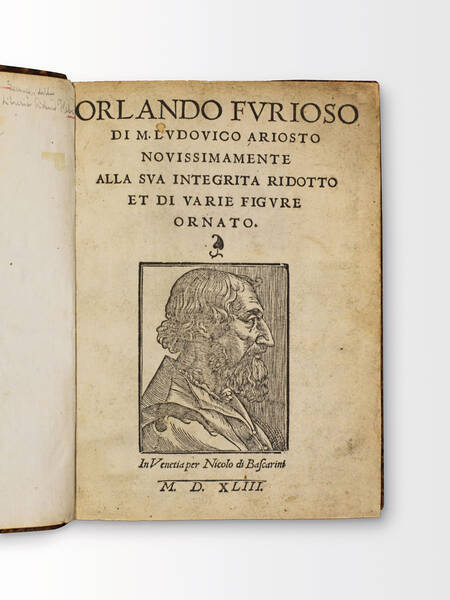
ARIOSTO, Ludovico
Orlando Furioso di M. Ludovico Ariosto novissimamente alla sua integrità ridotto et di varie figure ornato.
€ 12.000[BIBLIA ARABICA]
Evangelium Sanctum Domini nostri Iesu Christi conscriptum a quatuor Evangelistis sanctis, id est Matthaeo, Marco, Luca et Iohanne.
€ 15.000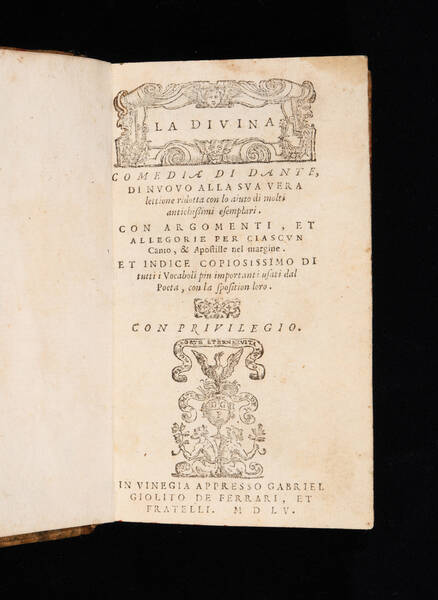
ALIGHIERI, Dante
La Diuina Comedia di Dante, di nuouo alla sua vera lettione ridotta con lo aiuto di molti antichissimi esemplari. Con argomenti, et allegorie per...
SOLD OUTMEDA RIQUIER rare books ltd.
4 Bury Street St James's
SW1Y 6AB London
Phone +44 (0) 7770457377
info@medariquier.com

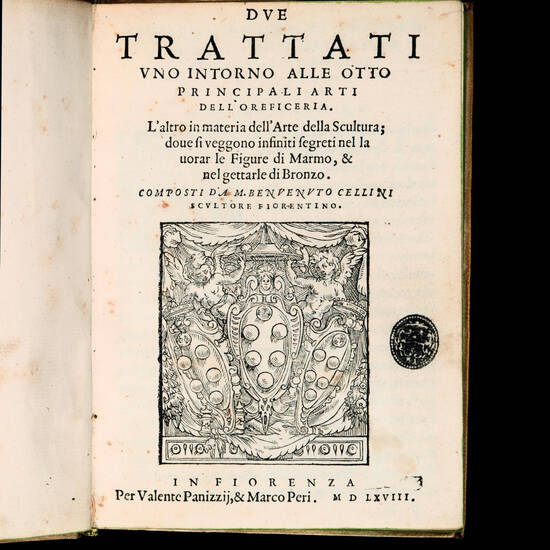
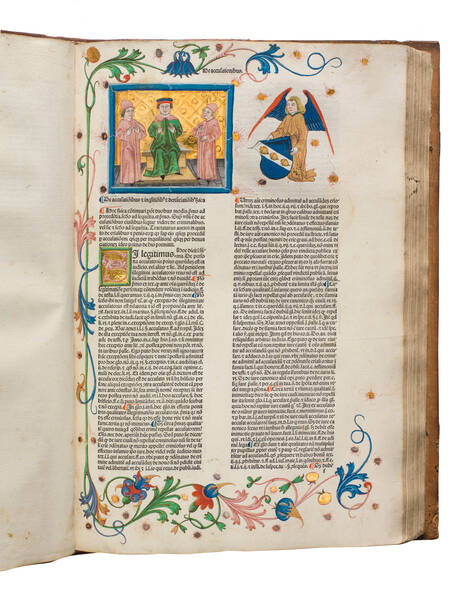
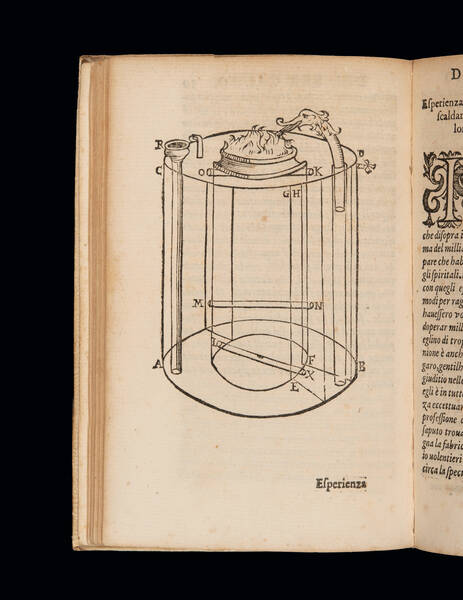
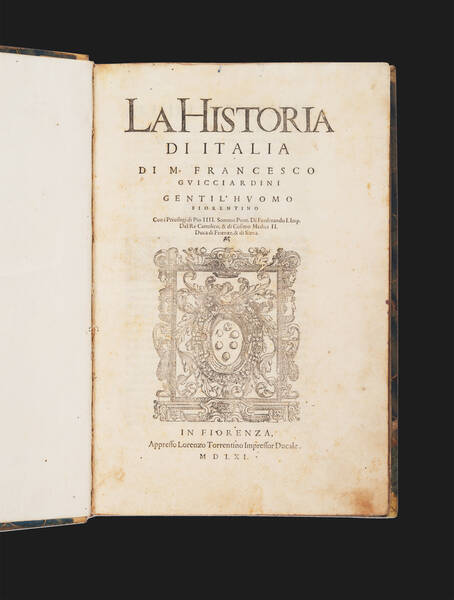
![Opera posthuma [Compendium grammatices linguae hebraeae]. Opera posthuma [Compendium grammatices linguae hebraeae].](https://www.medariquier.com/typo3temp/pics/9e46dbc214.jpg)
